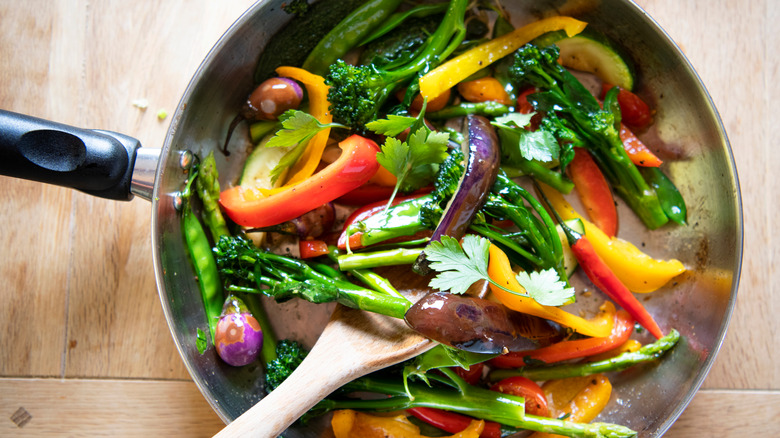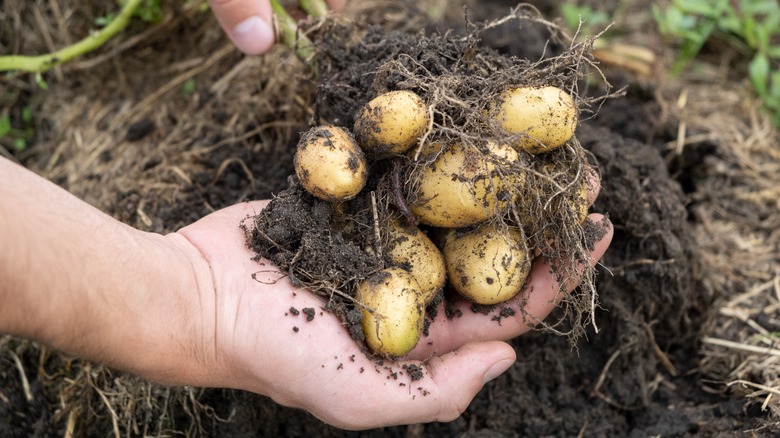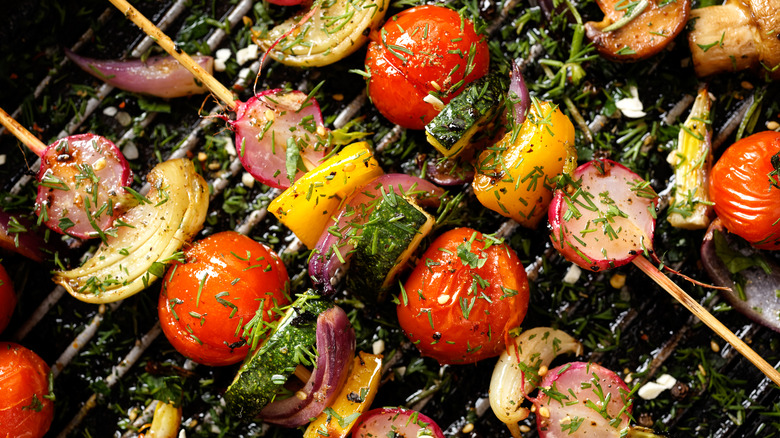The 'Ground Up' Rule For Sautéing Vegetables That Makes All The Difference
Sautéed vegetables go with a variety of meals, and they can make a great side dish or base for a main entree like a stir fry. It can be tricky to get the cooking technique right for sautéed vegetables, though — no one wants soggy mushrooms, burnt broccoli, or undercooked potatoes.
When cooking a medley of different types of vegetables, it is important to be conscious of timing, since different veggies finish at different times. This is where the "ground up" rule comes in, according to The Spruce Eats. Essentially, this rule directs cooks to start sautéing vegetables that grow under the ground, such as potatoes, carrots, and onions, before vegetables that grow above ground, such as zucchini, peppers, asparagus, and cabbage.
Since some require longer cooking times than others, the rule helps ensure that all of the vegetables are done cooking at the same time. Below-ground vegetables, especially root vegetables, tend to be harder and denser than their above-ground counterparts. Because of this, below-ground vegetables like sweet potatoes and carrots usually take around 15 minutes to sauté, while above-ground vegetables like zucchini and squash are done in around five minutes.
Tips for applying the 'ground up' rule
To apply the rule, consider the vegetables you are cooking and organize them based on how they grow in a garden. For example, if you are making a veggie medley with bell peppers, broccoli, carrots, and red onions, you would group carrots and red onions as below-ground vegetables that need more time to cook, and the broccoli and bell peppers as above-ground vegetables that can be added to the medley later.
Note that there can still be variations in cooking times among vegetables in the below-ground and above-ground categories. Onions, for example, fall into the below-ground group but require less sautéing time than sweet potatoes. And cauliflower, an above-ground vegetable, is more dense and requires more time than asparagus. To account for these variations, you can look up specific time instructions for each vegetable or research what signals that a certain vegetable is done, such as being fork tender.
Another tip for applying the "ground up" method is ensuring that you cut vegetables with similar cook times into similarly sized pieces. This will help with even cooking since smaller pieces will finish faster.
Does the rule apply to roasting, grilling, and other cooking methods?
The "ground up" rule should not be limited to sautéing alone, as it can apply to most vegetable cooking methods, including roasting, grilling, air frying, and boiling. The density differences in above-ground and below-ground veggies remain the same, regardless of how you prepare them, with root vegetables and others that grow underground requiring more cooking time.
With different cooking methods, timing can vary greatly — homemade french fries may be done after 12 minutes in an air fryer, but require 25 minutes in an oven. A lot of these variations also depend on the appliance or cookware you are using, as well as the temperature and preparation method. For this reason, we would advise following the cook times on your recipe or researching the timing for the vegetables you are using.
That being said, the "ground up" rule is a good place to start that can help you be a more efficient cook. You can save yourself time during the cooking process by knowing which vegetables need longer in the skillet or on the grill. Simply wash, cut, and prepare those below-ground vegetables like potatoes first, and while those get a head start cooking, you can move on to the above-ground vegetables.


